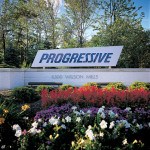Eighteen-year-old Kristian Roggio was riding in a friend’s car when another driver careened across a Brooklyn street, colliding head-on and killing her. That driver had inhaled aerosol dust cleaner moments before to get high, and prosecutors say he was impaired enough to be charged with vehicular manslaughter.
But New York’s top court threw out the case, ruling the chemical composition of the dust cleaner wasn’t on the state’s list of banned substances – a requirement under the law – and that he couldn’t be charged under a statute meant for drunken driving.
That ruling nine years ago highlights a loophole that still exists in New York and a dozen other states which base intoxicated driving – not on a police officer’s observation of impairment – but on a specific list of banned substances 34 pages long.
Such laws were intended to give a scientific basis to drugged-driving charges. But some law enforcement officials say they have failed to keep up with the boom in designer drugs – such as synthetic marijuana, known as K-2 – and homemade concoctions that are chemically distinct from traditional narcotics, which is leading them to push for a change in New York’s law. They say that even though laws have been passed making it unlawful to sell or possess synthetic drugs, drugged driving laws haven’t caught up with the rise in those narcotics.
“If we can’t define the chemical and it’s not on the list, we can’t prosecute you,” said Nassau County District Attorney Madeline Singas. “It is really frustrating for us in law enforcement especially as these chemical drugs become more and more popular with our kids. We’re basically fighting drugged driving with one hand tied behind our back.”
Experts say synthetic and homemade drugs impair a user’s cognitive and motor skills just like their recognized illegal counterparts. And although state banned lists are occasionally updated, that’s not happening fast enough to keep up with the black-market chemists who are continually making slight changes in their compounds to stay one step ahead of the law.
“Every kid with access to the Internet has access to unregulated designer synthetic drugs that are largely unknown to law enforcement,” said Brendan Ahern, a New York attorney and former vehicular crimes prosecutor who has trained police officers and prosecutors on drugged driving. “There are certainly cases that are occurring routinely with drugs that law enforcement has the inability to detect.”
In 2012, in Long Island’s Nassau County, officers stopped an erratic driver who admitted she snorted a bath salt known as “Disco Powder.” Police found traces of the drug in her car, but prosecutors couldn’t charge her with intoxicated driving because the drug, which was made to mimic an outlawed stimulant, was just different enough chemically to escape legal scrutiny.
“Literally that’s all it took,” Singas said. “It was to just change the composition.”
It’s not just designer drugs. Some prescription drugs can also escape scrutiny.
In June 2014, a woman who crashed into a parked car in Suffolk County was arrested after telling police she had taken anti-depressant and seizure medication before the crash. The officer, who said the woman was stumbling, had slurred speech and failed a field sobriety test, arrested her on a drugged-driving charge. But a judge dismissed the charges against her last year after finding that the prescription pills weren’t on the banned list.
Thirteen states in the U.S., including Minnesota, Arkansas, Massachusetts and Ohio, rely, at least partially, on a list of specifically banned substances. Thirty-seven states, and Washington, D.C., have more expansive definitions of the word “drug.” Legislation is pending in New York to align its law with other states that rely on an officer’s observation of a driver’s condition or have broader definitions. California’s law, for example, allows for an intoxication charge if a driver uses any drug that causes impairment.
Peter Gerstenzang, an attorney from Albany who specializes in DWI defense, questioned whether such a broadening of the law was a good idea.
“The specificity of it was designed so that you didn’t get a situation where somebody had some kind of reaction to a non-listed substance that affected their driving,” Gerstenzang said. “You could have a reaction to aspirin, to Advil. It depends on the physiology of the individual.”
Was this article valuable?
Here are more articles you may enjoy.

 Work Safety Group Releases List of ‘Dirty Dozen’ Employers
Work Safety Group Releases List of ‘Dirty Dozen’ Employers  Growing Progressive Set to Hire 10,000 for Claims, IT, Other Roles
Growing Progressive Set to Hire 10,000 for Claims, IT, Other Roles  Jury Awards $80M to 3 Former Zurich NA Employees for Wrongful Termination
Jury Awards $80M to 3 Former Zurich NA Employees for Wrongful Termination  Swiss Re: Auto Insurance Price Rises to Decelerate as Claims Inflation Eases
Swiss Re: Auto Insurance Price Rises to Decelerate as Claims Inflation Eases 